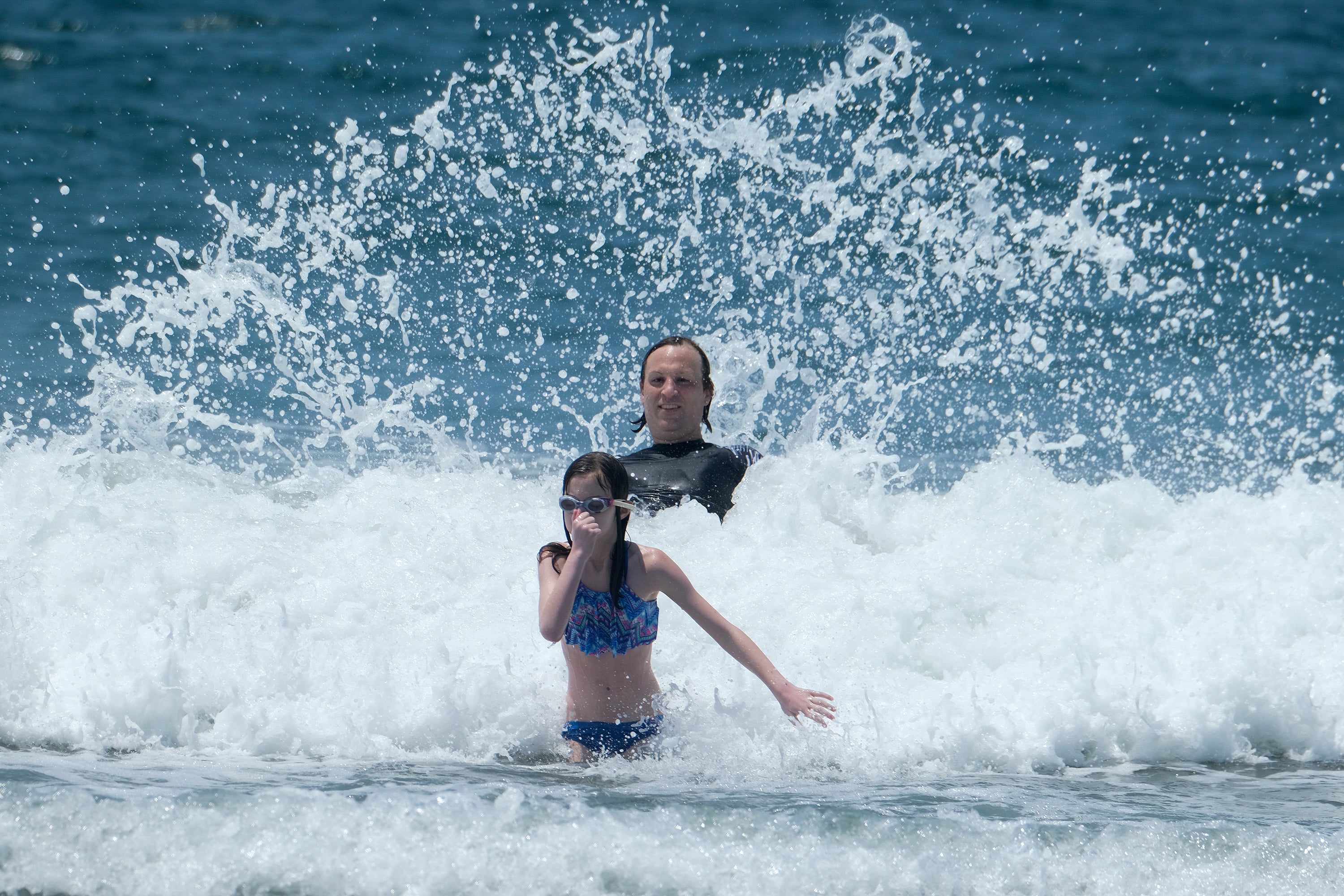Heat wave grips US West amid fear of a new, hotter normal
An unusually early and long-lasting heat wave has brought more triple-digit temperatures to a large swath of the U.S. West

Your support helps us to tell the story
From reproductive rights to climate change to Big Tech, The Independent is on the ground when the story is developing. Whether it's investigating the financials of Elon Musk's pro-Trump PAC or producing our latest documentary, 'The A Word', which shines a light on the American women fighting for reproductive rights, we know how important it is to parse out the facts from the messaging.
At such a critical moment in US history, we need reporters on the ground. Your donation allows us to keep sending journalists to speak to both sides of the story.
The Independent is trusted by Americans across the entire political spectrum. And unlike many other quality news outlets, we choose not to lock Americans out of our reporting and analysis with paywalls. We believe quality journalism should be available to everyone, paid for by those who can afford it.
Your support makes all the difference.An unusually early and long-lasting heat wave brought more triple-digit temperatures Wednesday to a large swath of the U.S. West, raising concerns that such extreme weather could become the new normal amid a decadeslong drought.
Phoenix which is seeing some of the highest temperatures this week, was expected to hit 115 degrees (46 Celsius) Wednesday and 117 the next two days, the National Weather Service said.
Scientists who study drought and climate change say that people living in the American West can expect to see more of the same in the coming years.
“Heat waves are getting worse in the West because the soil is so dry” from the region's megadrought, said Park Williams, a University of California, Los Angeles, climate and fire scientist who has calculated that soil in the western half of the nation is the driest it has been since 1895. “We could have two, three, four, five of these heat waves before the end of the summer.”
A few clouds were holding the temperatures down slightly in the desert region of southwest Arizona and southeast California, but there was no real relief expected from the excessive heat warning in effect until at least Sunday.
Expecting crowds trying to cool off, a half dozen lifeguards in wide-brimmed straw hats and red T-shirts over swimsuits waited for people to arrive at a city pool in downtown Phoenix that features a water slide and several fountains. Several blocks away, outdoor misters spritzed diners on restaurant patios.
In California, the electrical grid operator said the state was projected to have enough energy to meet demand Wednesday. But the California Independent System Operator said residents may be asked to voluntarily conserve electricity this week amid record-breaking heat blanketing the West.
Forecasts also showed enough reserves to cover demand Thursday, but Californians should be vigilant in case there’s need to conserve as solar energy production drops off, the grid operator said.
Higher temperatures were felt in the normally temperate San Francisco Bay Area. A few cooling centers were open but mostly empty by the afternoon.
Kathleen Craft, shelter coordinator for the city of Livermore, California, said temperatures had reached 99 degrees (37 Celsius) shortly after midday but only one woman had shown up at the city's cooling center.
“We’re anticipating we’ll see more people tomorrow when a temperature of 108 degrees is forecast,” Craft said.
Elsewhere in the West, triple-digit heat was forecast in Denver which saw a record high of 101 degrees (38 Celsius) Tuesday. The weather service issued an excessive heat warning for parts of western Colorado, must of which is experiencing extreme drought conditions.
Bekka Hamburg was trying to beat the heat by paddleboarding on a lake just west of downtown Denver on Wednesday.
“I rented this (paddleboard) a week ago knowing that it would be like 100 degrees,” the 24-year-old visiting from Indianapolis said. “I didn’t pack any pants, didn’t pack any T-shirts. I just packed tank tops and shorts.”
Hamburg said it was the first time she had experienced Colorado’s “dry heat,” adding that it’s much easier to manage than the humid heat common in the Midwest.
New Mexico also experienced more record-breaking highs. But a possible respite was in sight with showers and thunderstorms expected in parts of the state.
In Montana, temperatures over 100 degrees (38 Celsius) have made it tougher to fight wildfires that have exploded in size, triggering evacuations and destroying an undetermined number of homes. Furious winds have stoked the flames and forced the crash-landing of a firefighting helicopter.
At least 14 new fires have been reported in Montana and Wyoming since Tuesday.
The dry weather was also being felt in Idaho where authorities are preparing for what could be a challenging wildfire season.
Nick Nauslar, a meteorologist with the National Interagency Fire Center, told state officials this week that nearly 80% of Idaho is in drought and the rest will likely experience it in the coming months. He said Idaho had its second-driest spring in the last 126 years.
___
Associated Press journalists Olga R. Rodriguez in San Francisco; John Antczak in Los Angeles; Thomas Peipert in Denver; and Matthew Brown in Billings, Montana; Keith Ridler in Boise, Idaho; Brittany Peterson in Denver contributed to this report.